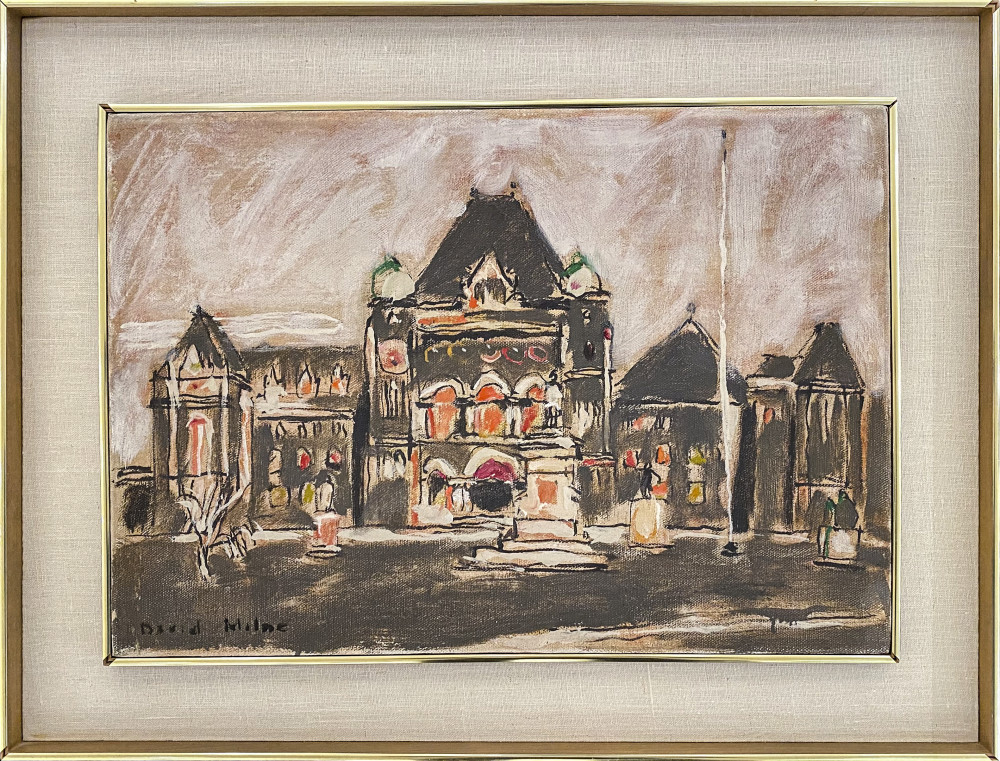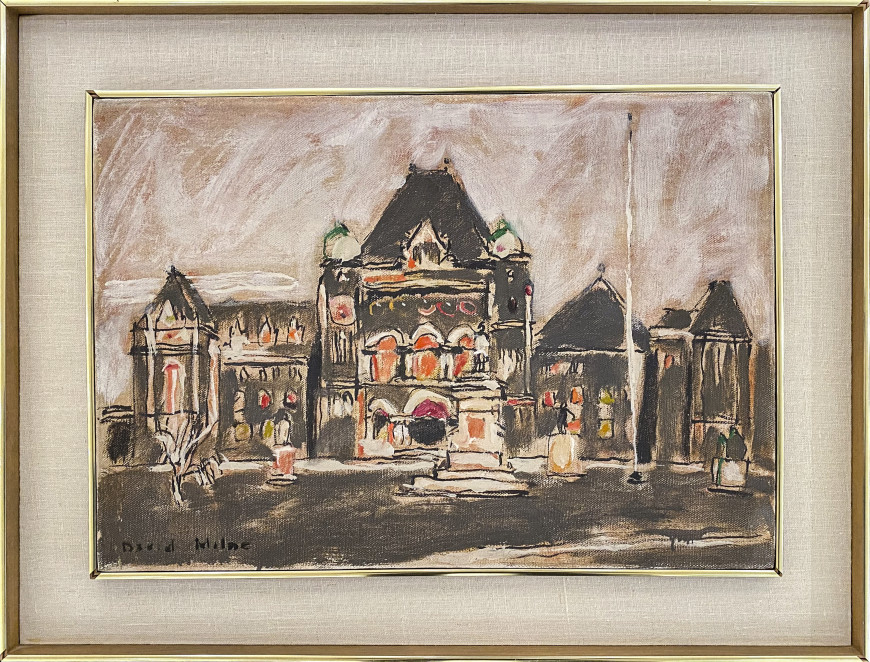-
Œuvres d'art
David MilneParliament Buildings at Queen's Park, 1940 (January 30)1881-1953Oil on canvas18 x 26 in
45.7 x 66 cm
This work is included in the David B. Milne Catalogue Raisonne of the Paintings compiled by David Milne Jr. and David P. Silcox, Vol. 2, no. 401.42.SoldInscriptions
signed [in 1946, per Silcox / Milne], "DAVID MILNE" (lower left)Provenance
Galerie Godard Lefort, Montreal, 1973.
Marlborough-Godard Gallery, Toronto, 1976;
Acquired from the above by the present owners.
Expositions
Galerie Godard Lefort, Montreal, David Milne (1882-1953): A Survey Exhibition, 22 April - 15 May 1971, cat. no. 22 as Parliament Buildings.
Marlborough-Godard Gallery, Toronto, David Milne, The Toronto year, 1939-1940, January 1976, cat. no. 41 as Parliament Buildings.
Documentation
Marlborough-Godard Gallery, Toronto, David Milne, The Toronto Year, 1939-1940, January 1976, cat. no. 41 as Parliament Buildings, repr. p. 37.
Milne depicted figures and buildings more often than we might at first think. Both in the northeastern USA and in Ontario, he showed barns in the rolling countryside that he lived in and loved as much as remote settings, houses in Uxbridge and other towns where he resided, and as in this case and his paintings of the national parliament buildings in Ottawa, celebrated and significant buildings. He was equally taken with the forms of ramshackle neglect (see Ruin in the Wood, below) and official structures. Milne’s title here is again specific, the imposing Ontario Legislative Building in Queen’s Park, Toronto – designed in the Richardsonian Romanesque style by Richard Waite and opened in 1893 – on a winter Tuesday. The weather was “moderately cold,” according to the Globe and Mail. Daubs of white on the building, front paths and driveway, and especially the tree to the left, suggest the expected covering of snow, yet Milne fills his foreground and the mass of the building with a thin, dark pigment. However much wartime Toronto might have warranted it, the effect is not ‘dark’ because he also lights the windows with exuberant flashes of yellow, orange, and red. These highlights suggest interior lighting and perhaps curtains across the large windows. In 1939, Milne painted the same building seen again from the south, though from a more oblique angle. He chose a night scene: the building is lit, and the sky is dark. Trees are silhouetted (fig. 1). In the oil from 1940, he has reversed this relationship of tone. What this variation on the theme underlines is Milne’s constant fascination with the fluctuations in what he sees. Not content to flip the tonal values in a second watercolour, in the later version he turns to oil paint, thinly applied over a coarsely textured support. The earlier watercolour has the drama of an oil painting; the later oil painting mimics the fluidity of watercolour.
Mark A. Cheetham














